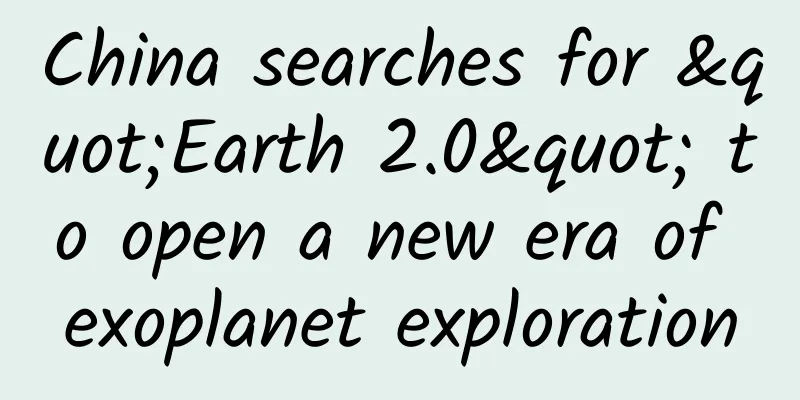Motorola: Buy a Moto X with a "native Android experience" for the Spring Festival

|
This should be the most exciting news during CES: With the gradual completion of Lenovo's acquisition and integration, Motorola, which had temporarily left the Chinese market, finally decided to return to China. In an interview at CES, Motorola President and Chief Operating Officer Rick Osterloh told PingWest and other media that they plan to launch three mobile phones in China this year, and Moto X will be available before the Spring Festival. Moto X with native Android experience? Available before Spring Festival
Rick Osterloh, Motorola's president and chief operating officer, said the new Moto X will be the first product Motorola will launch after returning to China, and the time is set before the Spring Festival in early February. Moreover, just like the international version of Moto X, they will also launch products with different colors, shells and materials in China. In addition, the complete customization service Moto Maker will also be launched. Moto X will not be the only product Motorola will launch in China this year. The higher-end Moto X Pro and the cost-effective Moto G 4G version will both be launched in March. The design of Moto X Pro is basically the same as Moto X, but the screen is enlarged to 6 inches, providing a 13-megapixel camera and immersive experience, which should be Nexus 6; while Moto G has a 5-inch screen and supports 4G LTE. Osterloh said that Motorola had experienced a difficult year in China, but they are happy to return to the Chinese market. In his opinion, Motorola plays the role of a "challenger" in the Chinese market. However, they did not disclose the specific price and operator cooperation plan. The main feature of Moto X is the native Android experience. Will this change in China? Liu Jun said that Motorola's hardware capabilities are beyond doubt, and under the leadership of Google in the past, its software capabilities have also been greatly improved. Therefore, Motorola will retain this feature of its own, "after returning to China, we will bring back the original Moto and the original Android." However, he added that some of the most critical applications in China will still be added to the phone, such as the app store. It seems that the absence of Google Play is inevitable. I just don’t know whether other Google services besides Google Play will be “castrated”, and how much of the original ecology of Moto X, which focuses on the native Android experience, can be retained after localization. Moto 360 smartwatch? No release date
Moto 360 is probably the most popular product of Motorola right now. At the interview site, Liu Jun, Osterloh and other executives all wore a Moto 360 watch on their wrists.
However, domestic users may not be able to purchase this product through normal channels in the short term. Osterloh said that Moto 360 is a very important product for both Motorola and Lenovo, and wearables will be a very important field. However, since the system of Moto 360 is developed by Google, Lenovo needs to cooperate with Google to promote the introduction of Moto 360 in China. Therefore, they have not yet set a timetable for launching this product in China. However, this is for the Chinese market. So, in the international market, will the Moto 360, as Motorola's iconic product in the Google era, change after Lenovo takes over? Liu Jun said that the merger of Motorola and Lenovo will not affect the Moto 360 plan. After Google acquired Moto, it still treated it as an independent company, and now the two are still in partnership. Lenovo+Moto: Lenovo is internationalizing again The most obvious benefit of the merger between Lenovo and Motorola is that Lenovo has become the world's third largest mobile phone manufacturer. However, Liu Jun believes that the return of Motorola is a great enhancement to Lenovo's mobile business, which is not only reflected in the numbers, but also in the brand image and positioning. Another thing that cannot be ignored is the help that Motorola can provide to Lenovo in internationalization. Osterloh said that Motorola's shipments grew 100% last year, and it performed particularly well in some emerging markets, gaining a 12% share in Brazil and a 5% share in India. This seems to be somewhat inconsistent with Lenovo's original intention of focusing on mature markets. Liu Jun said that Lenovo's previous internationalization strategy was three steps: first China, then emerging markets, and finally mature markets such as Europe and the United States. The acquisition of Moto is the beginning of the third step. This leapfrog acquisition method can allow Lenovo to quickly gain access to mature markets and bring many benefits, including brand, intellectual property rights and operator relationships. After the merger is completed, Liu Jun said that Lenovo will work with Motorola to design a global development plan to develop the Lenovo and Moto dual brands globally. "However, Moto's focus is still on mature markets, and we will quickly introduce it to other markets around the world, while Lenovo will focus on emerging markets." |
<<: CES2015: Razer Forge TV Gaming Set-Top Box
>>: After the failure of Fire Phone, Amazon's hardware team Lab126 began to turmoil
Recommend
It’s such a pity that 90% of the creative information flow logos are placed in the wrong place!
"Make the logo bigger! Bigger!" - Proba...
User operation, how to increase user growth?
If you have a tactical way of thinking about prob...
Brazilian Automobile Dealers Association: In April 2024, sales of domestically produced cars in Brazil have soared 8 times to 48,000 units
According to recent news, sales of domestically p...
Help! Who said that putting garlic on watermelon can keep it fresher? Please share this with your parents!
Food is not easy to preserve in summer, so wrappi...
How to do Taobao customer promotion now?
Friends who are familiar with online store operat...
Big data reveals! What climate secrets are hidden in the Winter Olympics gold medals?
China Weather Network Compared with the Summer Ol...
IEA: Global Energy Report 2020
The IEA has released its 2020 Global Energy Repor...
Dog Brother Notes's Mutual Aid Course "Short Video System Thinking + Practical System Course" Collection
Introduction to training course content: This trai...
Is Mabaloxavir, the “miracle flu drug” that costs more than 300 yuan per box, really worth taking?
Recently, influenza has been prevalent in many pl...
Snapchat porn leak source found
An anonymous developer of a third-party Snapchat ...
Seven Swords Zongming's Dragon Head Battle Method Part 3 Video + PDF
The third video + PDF resource introduction of th...
IDC: China's AR/VR headset shipments will reach 1.206 million units in 2022, of which AR shipments will reach 103,000 units
The International Data Corporation (IDC) released...
Coocaa P50 TV review: A good product for young people with 4K, MEMC, and HDR10 for only 2,000 yuan
Young people are fleeing from television, which h...
Many places report epidemics related to imported fruits and clothing! How to prevent it? Remember these nine points!
On April 21, Beijing Fengtai reported that a batc...
How to build a Baidu bidding promotion account structure and create a Baidu bidding account?
Friends who do SEM know that account building in ...









